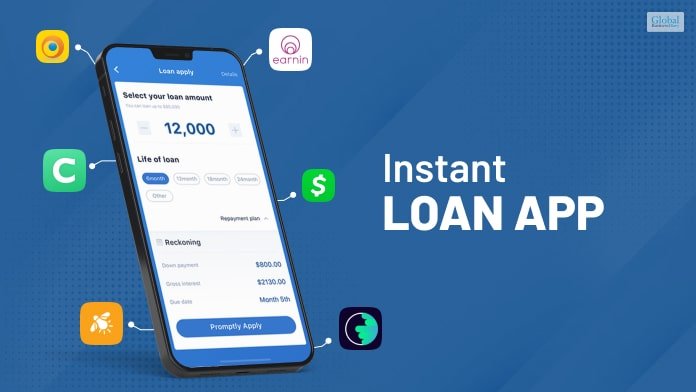The digital lending landscape in India has exploded in the past five years — fuelled by UPI adoption, smartphone penetration, and the promise of “instant money at your fingertips.” But with rapid growth has come equally rapid scrutiny. From RBI’s Digital Lending Guidelines to the introduction of CIMS reporting, the rules of the game are changing fast — and for many instant-loan apps, it’s either comply or die.
Let’s deep-dive into how compliance requirements are reshaping the sector, what CIMS (Credit Information Management System) really means for lenders, and how new consumer protection norms are transforming borrower experiences.
The Rise of Digital Lending & Instant Loan Apps in India
🔸 Speed Over Everything
Digital lenders emerged with a value proposition traditional banks couldn’t match — approval and disbursal in minutes, not days. Leveraging AI-based underwriting, alternative data, and mobile-first platforms, these apps attracted millions of first-time borrowers.
🔸 A Magnet for the Credit-Excluded
For gig workers, students, or people without a formal credit history, instant-loan apps were often the first taste of formal credit. Unlike rigid bank loans, they assessed eligibility using phone metadata, transaction SMS history, and app usage patterns.
🔸 The Flip Side — Harassment, Mis-selling & Data Abuse
The same speed that delighted users also enabled predatory lending practices. Aggressive recovery agents, hidden fees, inflated interest rates, and mass data scraping from user phones led to public outrage — and RBI intervention.
Understanding RBI’s Digital Lending Framework
The Reserve Bank of India stepped in with Digital Lending Guidelines (implemented from September 2022) to bring order to chaos.
🔸 Direct Disbursals to Bank Accounts
No more routing money through the lending service provider’s own account. Funds must go directly from lender to borrower.
🔸 Transparent Loan Agreements
Apps must display a Key Fact Statement (KFS) with all charges, interest rates, and repayment schedules upfront. No more fine-print surprises.
🔸 Ban on Unconsented Data Access
Loan apps can no longer demand access to contacts, photos, or location unless directly necessary for the loan process — and even then, with explicit consent.
🔸 Regulated Recovery Practices
Strong curbs on harassment: no calling borrower contacts, no late-night threats, and mandatory training for recovery agents.
CIMS Reporting: The New Watchdog in Town
The RBI’s Credit Information Management System (CIMS) is a game-changer for instant-loan apps.
🔸 What Is CIMS?
CIMS is a real-time credit reporting mechanism that ensures every loan — no matter how small — gets reported to credit bureaus within 24 hours.
🔸 Why It Matters for Borrowers
Previously, many small-ticket digital loans went unreported, leaving borrowers in a “credit shadow.” Now, timely reporting means good repayment builds credit history and defaults show up instantly.
🔸 Why It Matters for Lenders
Lenders can see if a borrower already has 10 other active instant loans, preventing debt traps and over-lending.
🔸 Integration Challenges
For small fintechs, CIMS compliance means upgrading backend systems, ensuring real-time API integration with bureaus, and maintaining high data accuracy.
Consumer Protection: RBI’s Core Focus
🔸 Loan Caps & Cooling-Off Periods
Some states are advocating caps on interest rates for micro-loans and cooling-off periods before a lender can offer a new loan.
🔸 Grievance Redressal Norms
Every digital lender must have a nodal grievance officer, visible on their app/website, and respond to complaints within a fixed timeline.
🔸 Borrower Awareness Campaigns
The RBI and industry bodies are pushing public education drives so borrowers understand KFS, EMI structures, and the risks of over-borrowing.
Compliance Is Now a Survival Strategy
The days of “launch first, regulate later” are over. For instant-loan apps, compliance is not optional:
- Tech Upgrade → Real-time CIMS integration, automated KFS generation, consent management.
- Policy Upgrade → Transparent disclosures, verified recovery practices, zero-tolerance for harassment.
- Trust Upgrade → Branding around reliability, not just speed.
The Bigger Picture: Financial Inclusion Done Right
If done ethically, digital lending can still be a powerful inclusion tool:
- Credit Access for the Underbanked
Through KYC-lite models and alternate credit scoring, millions can enter the formal financial system. - Digital Footprint as a Credit Passport
CIMS ensures borrowers’ good behavior gets recorded, paving the way for bigger loans at lower rates in the future. - RegTech Partnerships
Some lenders are teaming up with RegTech firms to automate compliance, making rules a growth enabler instead of a bottleneck.
Challenges Ahead
- Higher Compliance Costs → Small fintechs may struggle to survive the tech & legal overhead.
- Data Privacy Tensions → Balancing personalization with protection.
- Global Competition → As India tightens rules, global players with deep pockets may dominate.
Conclusion: The Future Is Transparent, Real-Time & Borrower-Centric
The RBI’s crackdown, CIMS integration, and stricter consumer protection norms mark the maturing of India’s digital lending market.
In this new reality, speed still matters — but trust, compliance, and borrower respect matter more.
Apps that embrace transparency, ethical lending, and tech-driven compliance will not just survive — they’ll own the future.




